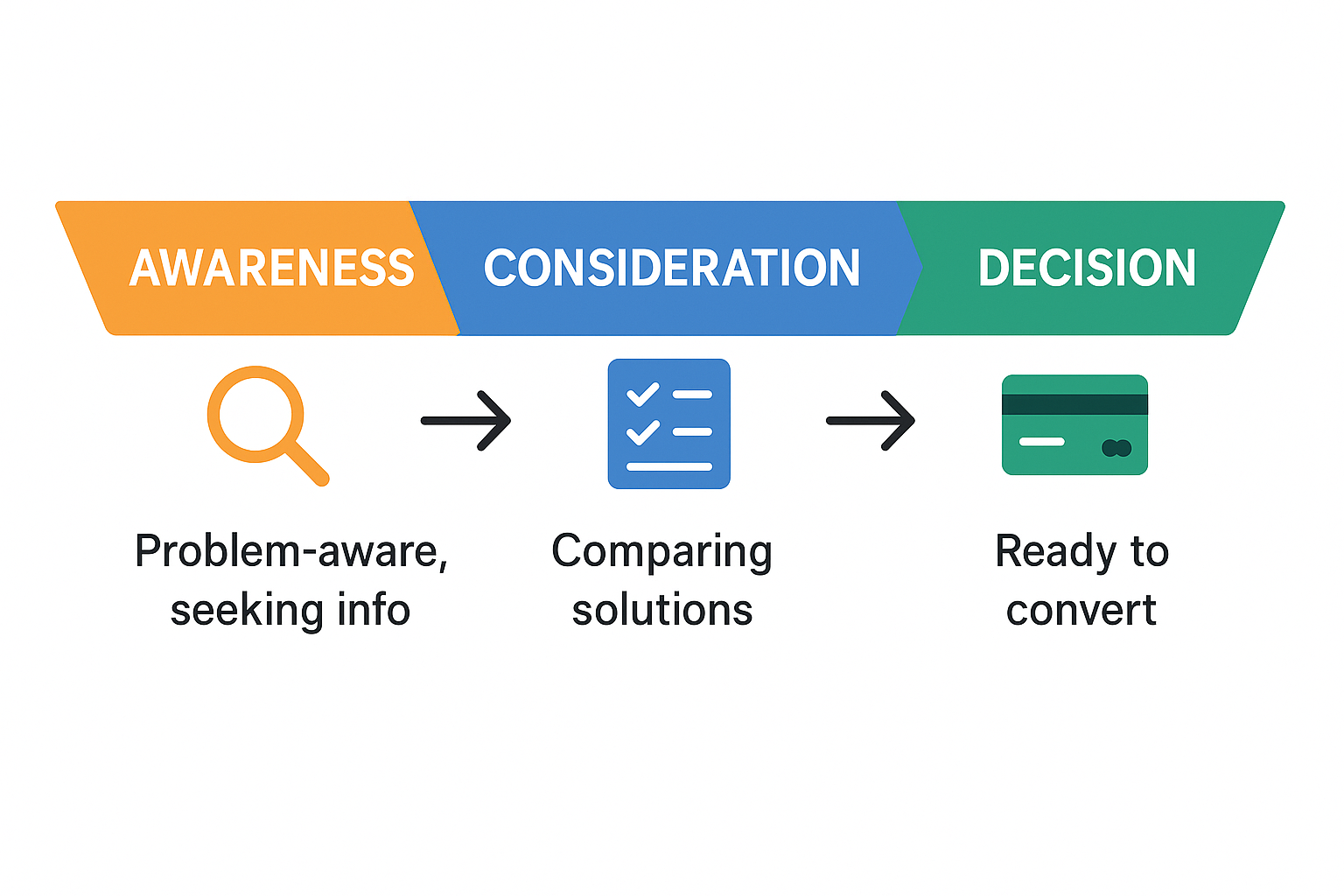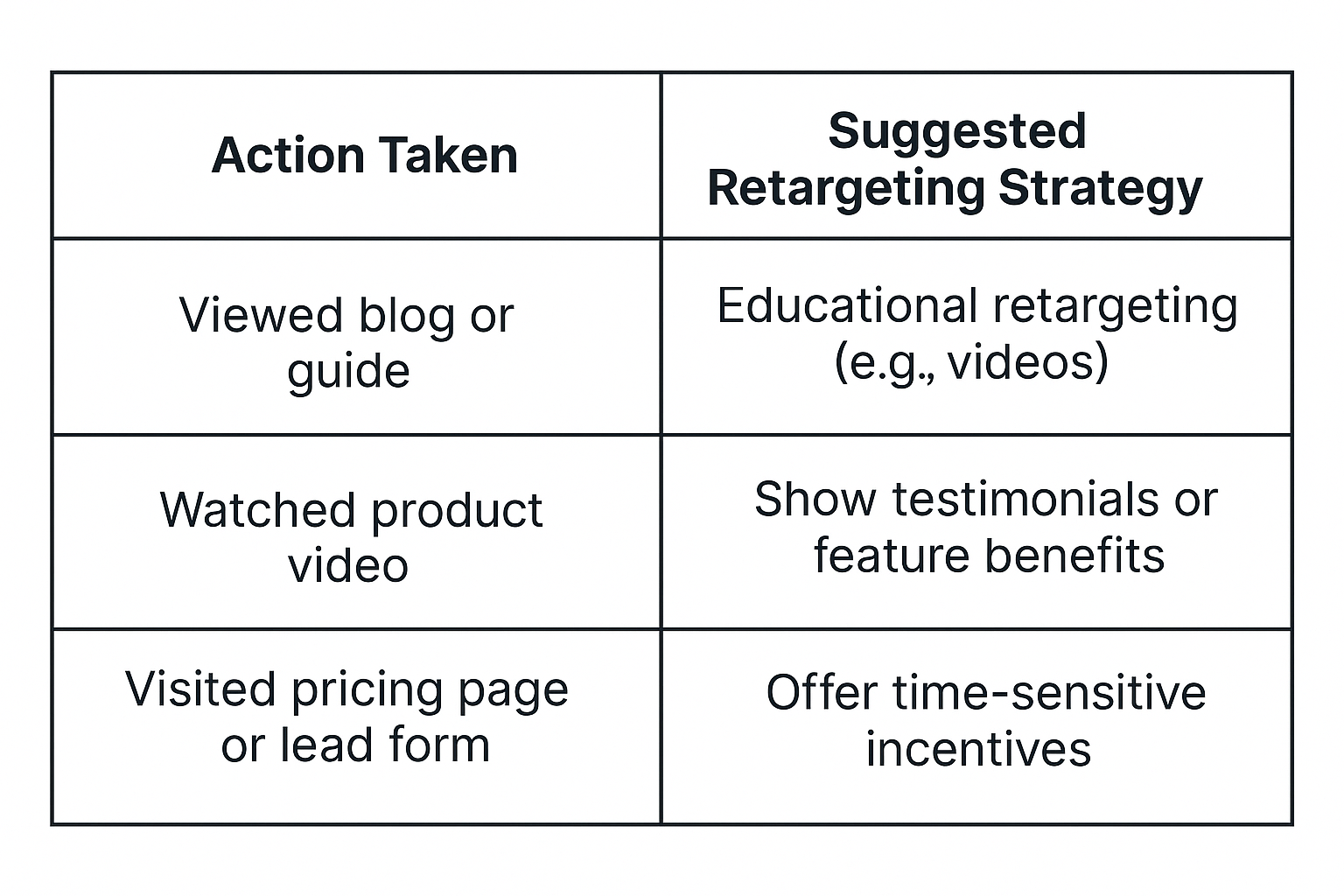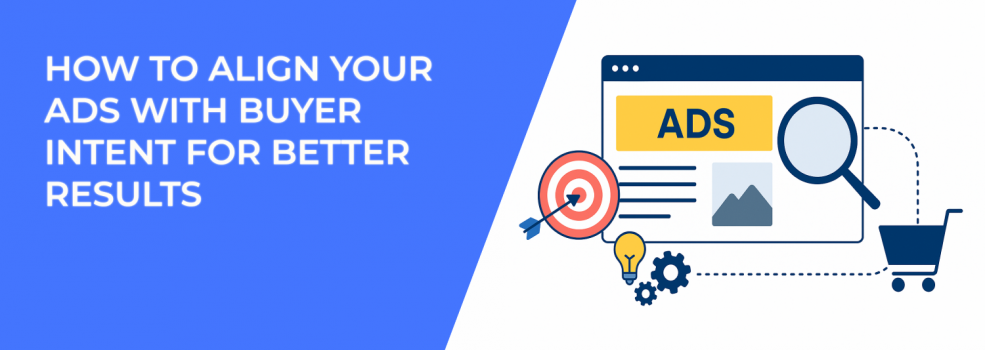Ever launched a campaign with clean copy, sharp creative, and great targeting — but still saw disappointing results?
Chances are, the ad missed the buyer’s actual intent.
When people see your ad, they’re not all at the same stage. Some are just becoming aware of a problem. Others are actively comparing solutions. A few are ready to take action now. Aligning your ads with these stages is what separates high-performing campaigns from wasted spend.
Let’s break down exactly how to align your ad strategy with real buyer behavior — and get more out of every click.
What Buyer Intent Really Means
Buyer intent is the mindset behind someone’s action.
What are they thinking when they see your ad? Are they researching, comparing, or ready to buy?

Broadly, intent falls into three stages:
-
Awareness stage — The buyer is identifying a problem but doesn’t yet know the solutions. Ads here should educate and empathize.
-
Consideration stage — The buyer is evaluating options. This is your chance to stand out by offering deeper value and differentiation.
-
Decision stage — The buyer is ready to act. These people need confidence, urgency, and clear next steps.
Understanding intent isn’t optional anymore — it’s how you stay relevant in a feed full of noise.
Want to learn how to build warm audiences from cold clicks? See: How to Re-Engage Cold Audiences with Facebook Ad Targeting.
1. Match Message to Intent (Not Just Demographics)
Too many ads push hard CTAs to people who aren’t even ready to convert.
Your copy should match the customer’s mindset, not just their age, location, or interests.
Let’s break it down by funnel stage:
Top-of-Funnel (Awareness)
They’re not solution-aware. They’re problem-aware. Your job is to offer help, not sell.
-
Use: educational content, blog posts, how-to guides, short videos.
-
CTA examples: “Learn why…”, “Explore the challenge”, “Read the breakdown”.
-
Copy angle: focus on pain points, trends, or insights.
Example: An ad linking to a blog post like Facebook Ad Targeting 101: How to Reach the Right Audience helps cold audiences learn without pressure.
Middle-of-Funnel (Consideration)
They know their problem — and they’re actively researching.
-
Use: comparison charts, video walkthroughs, social proof.
-
CTA examples: “Watch demo”, “See the difference”, “Compare features”.
-
Copy angle: show how you solve the problem better than others.
Pro tip: This is where many ads flop by staying generic. Make your value specific to what they’re comparing.
Bottom-of-Funnel (Decision)
Now’s the time to remove doubt, offer value, and close the deal.
-
Use: limited-time offers, retargeting sequences, lead forms.
-
CTA examples: “Get started now”, “Claim your discount”, “Book a call”.
-
Copy angle: trust, urgency, simplicity.
Need a refresher on how to handle this stage without sounding desperate? See Facebook Ads Not Converting: How To Fix It.
2. Segment Your Audience Based on Actions
Not all clicks are created equal.
The strongest signals of buyer intent don’t come from demographics — they come from behavior.

Here’s how to segment:
-
Visited a blog post or help guide? Early stage — retarget with educational or problem-awareness content.
-
Checked pricing or features? Mid-to-late stage — retarget with testimonials, case studies, or product demos.
-
Clicked "add to cart" or interacted with a lead form? Hot leads — follow up with urgency, incentives, or friction-reducing CTAs.
3. Use Intent-Rich Keywords (and Exclude the Wrong Ones)
Search-based ad strategies live and die by intent.
So don’t just choose keywords with high volume. Choose ones that signal where the person is in their journey.
Here’s how to segment by keyword type:
-
Informational keywords — e.g., “how to generate leads with Facebook ads” → Best for awareness campaigns. Help first, pitch later.
-
Comparative keywords — e.g., “best lead gen platforms 2025” → Great for middle-of-funnel ads that differentiate you.
-
Transactional keywords — e.g., “get B2B leads now” or “Facebook ad software trial” → High intent. Push your offer clearly.
Also, use negative keywords to block low-intent traffic like job seekers, DIYers, or irrelevant niches. You’ll save money and improve lead quality.
4. Retarget with Purpose — Don’t Just Repeat Yourself
Retargeting is often misunderstood.
It’s not about showing the same ad five times. It’s about creating a sequence that moves people forward — not in circles.
Here’s a better approach:
-
Step 1: Cold user reads a blog → retarget with a use case ad.
-
Step 2: User watches 50% of your video → retarget with a testimonial carousel.
-
Step 3: User visits your pricing page → retarget with urgency (limited offer or “last chance” CTA).
Every step should answer the question: What do they need to believe to take the next action?
Not sure how to structure this? Start with How to Set Up Facebook Retargeting.
5. Test for Alignment — Not Just CTR
You probably already test creative and copy. But are you testing for intent fit?
Try running side-by-side ad sets:
-
One with softer, top-of-funnel language.
-
One with high-intent CTAs and urgency.
Then measure not just CTR or CPC — but what happens after the click. Did they bounce? Did they engage with the page? Did they complete a form?
Sometimes an ad with lower CTR can bring in better leads — simply because it matched the right moment in the buyer journey.
Final Thoughts: Relevance Over Reach
Most ad problems aren’t about budget. They’re about timing.
If you try to close a cold prospect, you’ll waste money. If you nurture a hot lead with vague content, you’ll lose momentum.
But when you align your messaging with intent — and guide the buyer through their natural decision process — you stop interrupting.
You start connecting.

